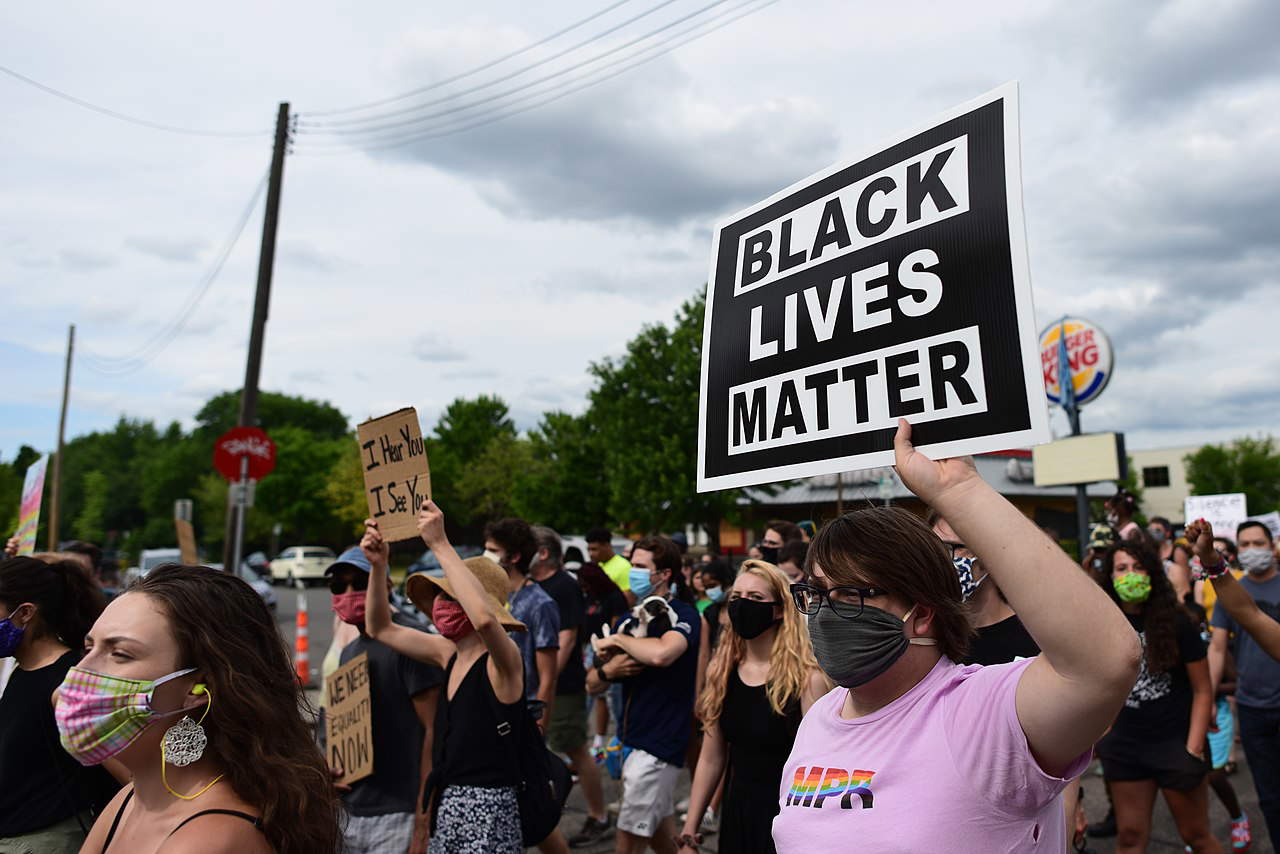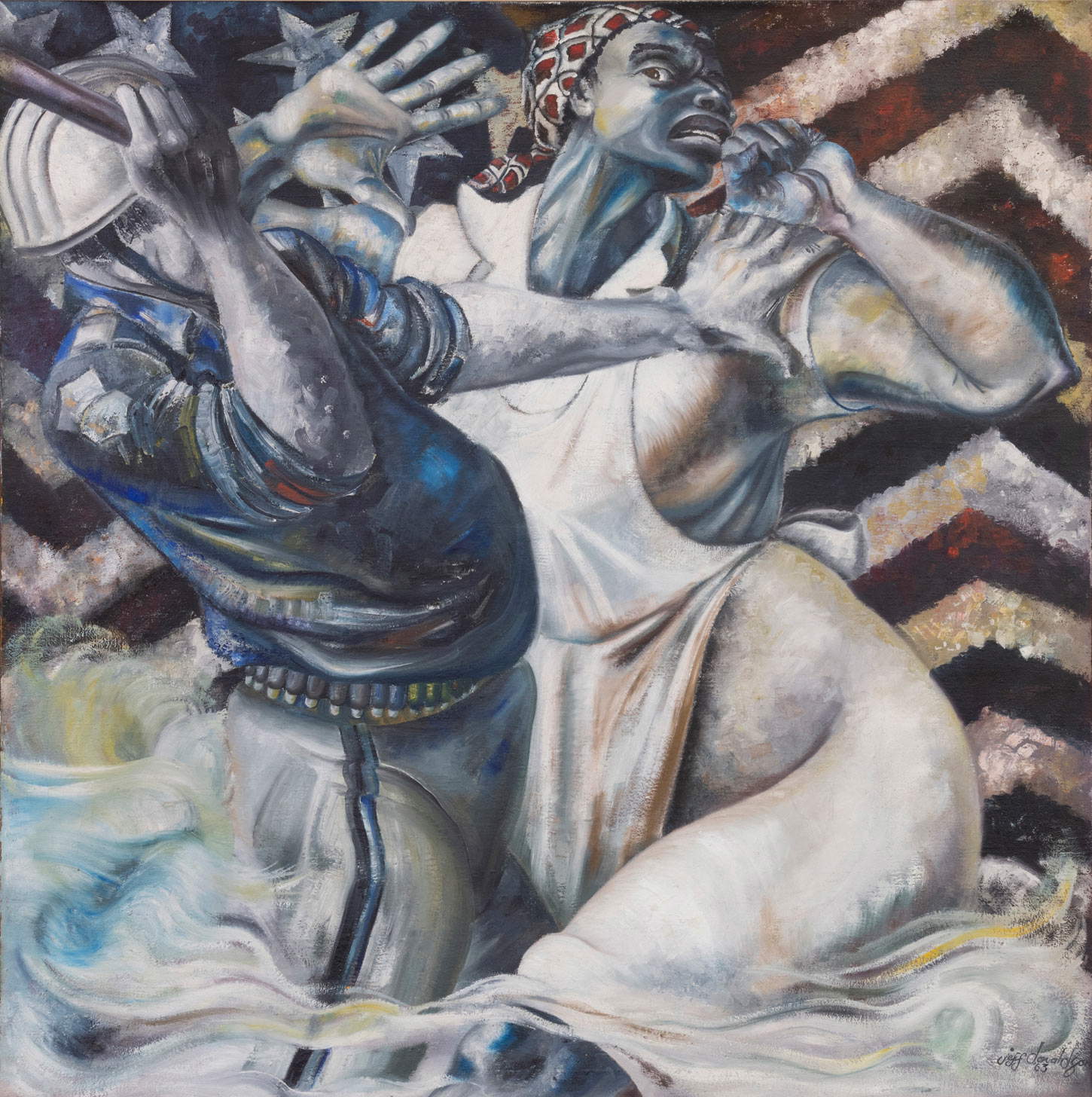When it comes to the relationship between the Black Lives Matter movement, theunprecedented wave of protest that began in the wake of the killings of George Floyd, Breonna Taylor and Ahmaud Arbery at the hands of police or people connected to law enforcement, and the Black Arts Movement of the 1960s and 1970s, the problem is that the situation in the United States seems to be changing day by day. Here, by an ominous twist of fate, the pandemic, the economic crisis, the threat of right-wing authoritarianism within the borders at home and abroad, and the outbreak of fierce mass protest have led us to experience again 1918, 1938, and 1968 simultaneously. And, of course, while it is impossible not to consider what were similar moments of social upheaval, the protests that arose in the wake of the deaths of Floyd, Taylor and Arbery really have no precedent in the United States.
The closest equivalent might be the many black community uprisings that erupted across the United States after Martin Luther King ’s assassination in 1968, in the context of the Black Power and Black Arts movements. However, in 1968 those protesting were overwhelmingly African American, and the uprisings themselves were confined to neighborhoods inhabited by black communities in urban areas. Today’s protests, at first peaceful but not infrequently escalating into violence, are much more multiethnic and multiracial, albeit with black leadership. They have occurred in even the most unlikely locations, with hundreds (and sometimes thousands) of people marching or gathering even in small rural towns, in all regions, as well as in urban areas.
The Black Art Movements of the 1960s and 1970s still remains an important milestone in understanding how African Americans (and others in the United States) understand and process this political moment. When the New York Times asked contemporary black poet Kwame Alexander what he was reading to measure up to the moment, this was his response, “I’m reading poems from the Black Arts Movement because they were able to creatively reflect the discontent of the enraged masses who took to the streets in the 1960s and 1970s, because they are politically galvanizing, because they remind us how good and beautiful it is to be black. These are all things we need right now” (“The Poems That Poets Turn to in a Time of Strife,” New York Times, June 11, 2020).
 |
| Minneapolis, Black Lives Matter movement protests after the death of George Floyd, June 19, 2020. Ph. Credit Juneteenth March for Justice |
The problem of police violence against black people, whereby they often saw (and continue to see) the police more as an occupying army inside their communities than as the guardians of impartial law, was already central to the Black Arts Movement as well. Virtually all the urban uprisings of the 1960s, prior to Martin Luther King’s assassination, arose from incidents that occurred because of police violence, or unfair arrests, and sometimes the police also attacked Civil Rights Movement activists. Of course there were other causes as well: poor housing conditions, lack of job opportunities, inferior education, unequal access to health care, and so on, but the conflict with the police was the straw that broke the camel’s back.
The artists who were part of the Black Arts Movement were certainly not the first African American artists to address the issue. In Langston Hughes’s 1949 short story Bop, the protagonist Simple, or the famous common man of Harlem, claimed that the sounds of bebop arose from the incident of a police officer beating a black man with a baton. In any case, it was the Black Arts Movement that strongly marked black violence and black resistance to police violence as instruments of racial power in the collective imagination.
The Black Arts was an avant-garde movement that sought to reach a large audience rather than a small niche. Black Arts activities and institutions appeared in almost every community and on almost every U.S. college campus that had a significant number of people of color. Although the regional and local manifestations of the Black Arts Movement (workshops, theaters, bookstores, galleries, schools, poetry readings, murals, concerts, dance companies, museums, magazines, newspapers, and so on) were in contact with each other and often collaborated, each individual community had particular characteristics.
The political convictions of Black Art Movements participants ranged from revolutionary Marxism to neo-Africanist cultural nationalism, and sometimes these instances combined in seemingly unlikely ways. However, despite this wide spectrum of often conflicting conviences, at a general level there was general agreement on the idea of African American liberation and the idea of the right of African Americans to determine their own destiny. There was also usually widespread support for the idea of developing or recovering an authentic black culture that was connected to African American folklore, or African American popular culture. In short, this culture was supposed to be mass, revolutionary, and paradoxically traditional.
The Black Arts Movement represented the uprisings against the police (and against the system represented by this violence) as popular struggles for black liberation and self-determination. These struggles were not always seen as political and physical, but were often cultural and symbolic. Stereotypes about blacks were frequently overturned: for example, a 1963 work by Jeff Donaldson, a proto-Black Arts artist, entitled Aunt Jemima and the Pillsbury Doughboy, depicts a black domestic worker resisting a police officer’s attack. The woman may also be an activist in the civil rights movement. In essence, Donaldson, founder of the prominent art collective Africobra, humanized the mythological image of the black cook decorating boxes of her baked goods for supermarket shelves, revitalizing her as a symbol of black pride and self-assertion. Similarly, poet and playwright Sonia Sanchez ’s play The Bronx is Next (1968) enacts a drama within a drama, in which a white policeman plays the role of a black Harlem resident and black revolutionaries dress as the police-a further reversal of social types in the context of the urban uprisings of the 1960s. Black resistance to police and police violence against the community is thus not only a protest against racist cops (though still an important aspect), but it is a rebellion against a larger system of oppression and dehumanization, and toward collective self-determination.
 |
| Jeff Donaldson, Aunt Jemima and the Pillsbury Doughboy (1963). |
Today we are not living in 1968. Yet the words “I can’t breathe,” which are among the last words uttered by George Floyd as he was choked by the knee of Minneapolis cop Derek Chauvin (and which are the same words uttered by Eric Garner, a black man choked to death by a New York City cop in 2014), have become a battle cry. But while this cry certainly underscores that police violence against people of color is a relevant social problem, at the same time it raises a complex of systemic issues faced by African Americans that cannot be made to be noticed through normal political channels. As Keeanga-Yamatta Taylor recently wrote, “Whether white society approves or disapproves, it didn’t matter in the 1960s and it doesn’t matter now: what did matter is that the formal mechanisms of social change failed, forcing African Americans to act for themselves” (“Of Course There Are Protests. The State Is Failing Black People,” New York Times, May 29, 2020). Although the times are different, the Black Arts Movement and its iconic images of violent confrontations between blacks and police as symbols of the oppression of the system, African Americans’ resistance to oppression, and the imperative of self-determination are the foundations for the social understanding of the killings of Floyd, Taylor, and Arbery, and the protests.
Warning: the translation into English of the original Italian article was created using automatic tools. We undertake to review all articles, but we do not guarantee the total absence of inaccuracies in the translation due to the program. You can find the original by clicking on the ITA button. If you find any mistake,please contact us.